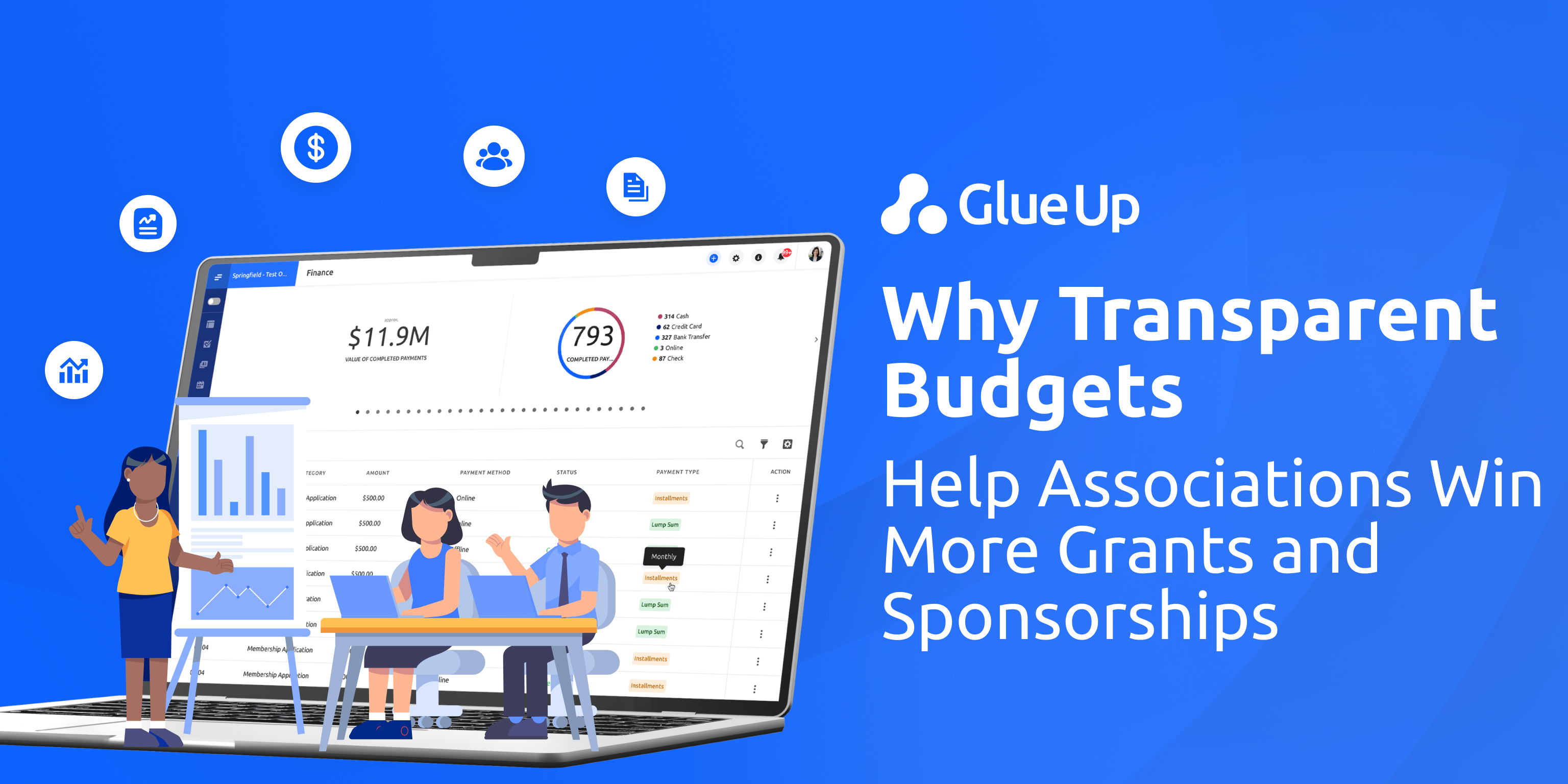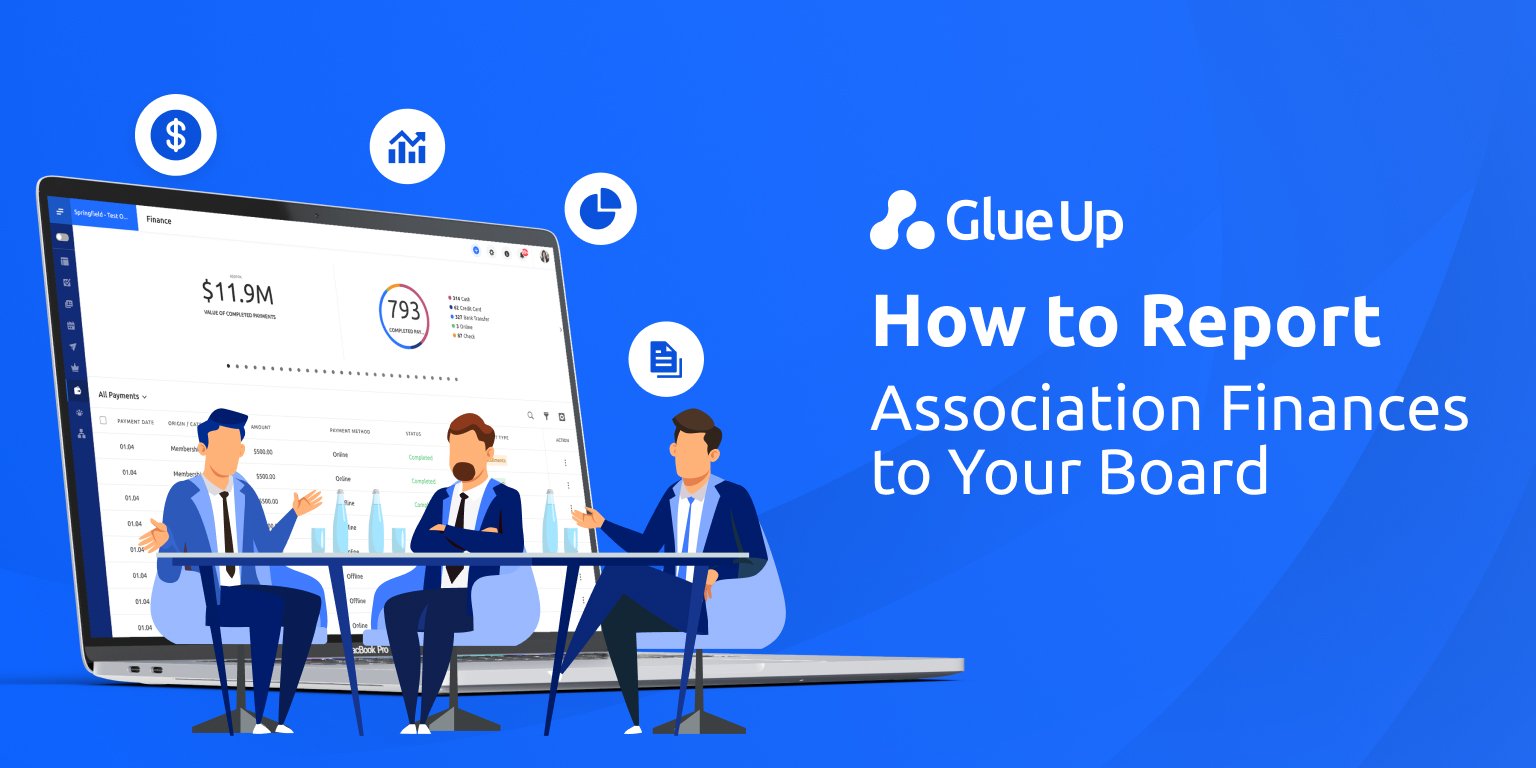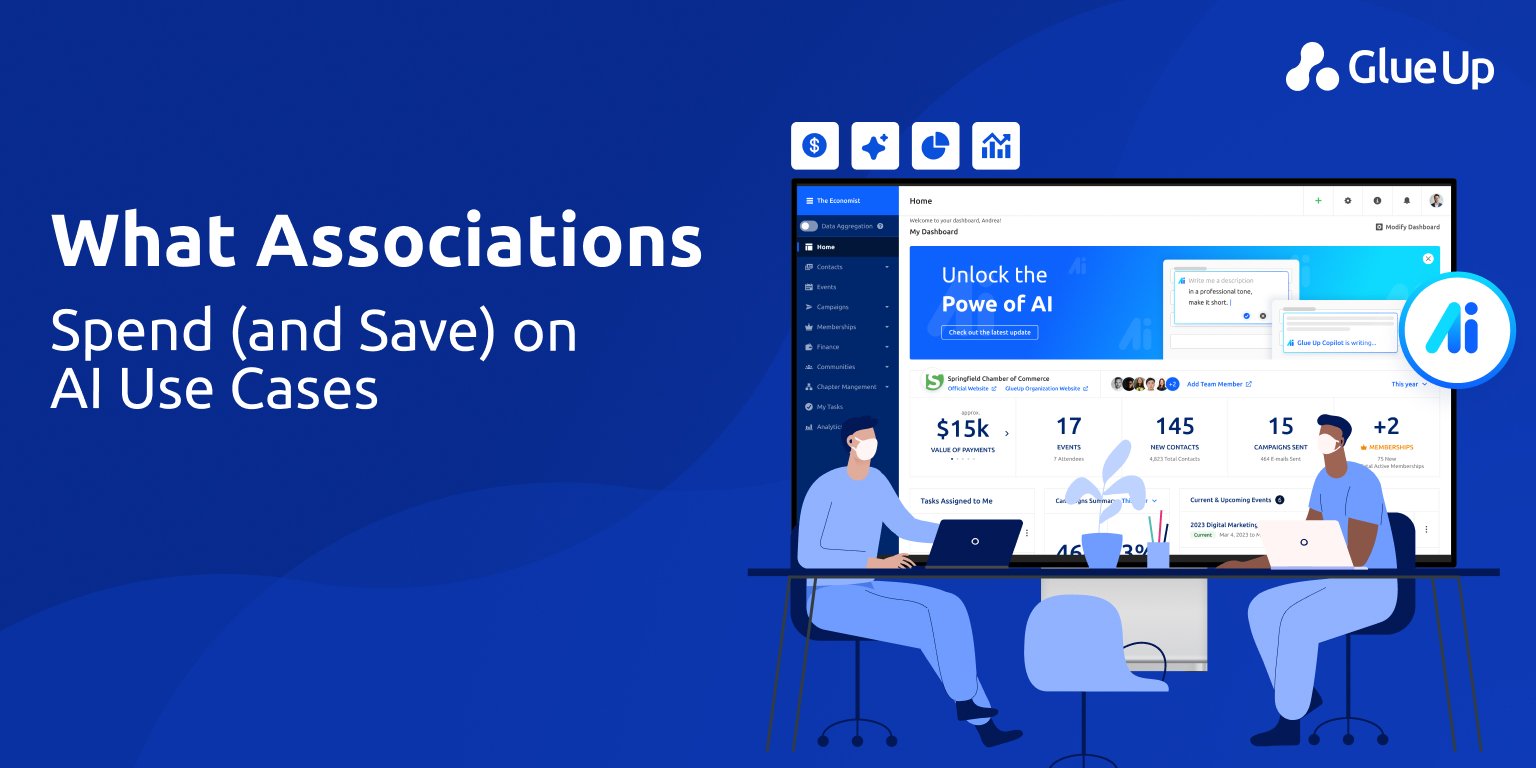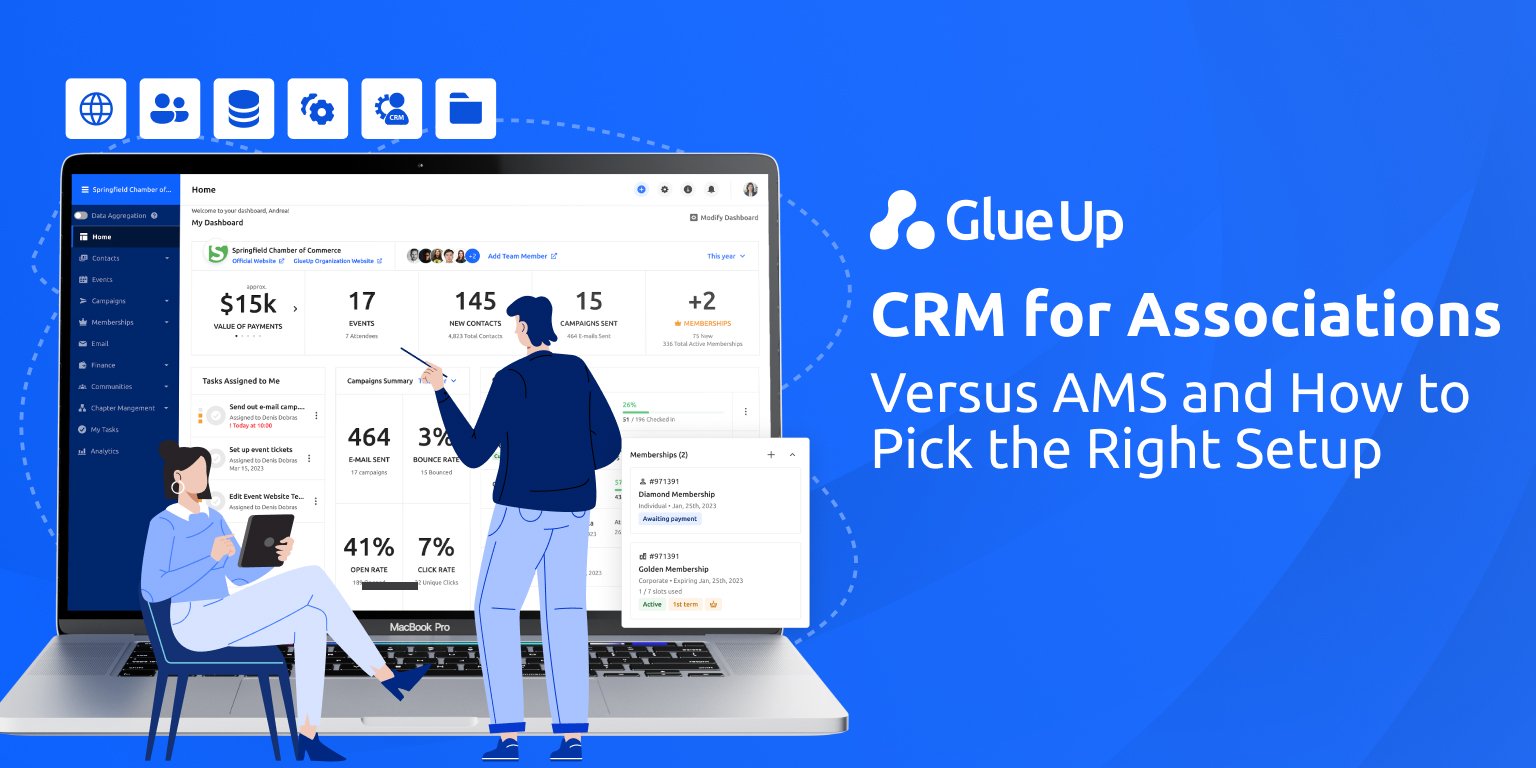
The most revealing moment in every funding pitch happens quietly, usually around page five.
A grant reviewer scrolls through your proposal budget, stops at “miscellaneous expenses – $12,000,” and frowns. One vague line item, and trust starts to leak out of the document.
That pause is where decisions are made.
Associations often spend weeks perfecting narratives and metrics yet lose credibility in the one section that funders read with suspicion, the numbers. The benefits of transparent budgeting go far beyond compliance; they directly shape how much trust, and therefore how much money, you earn.
When your financial story is clear, detailed, and traceable, reviewers see you as low-risk, competent, and partnership-ready. When it’s fuzzy, they assume the opposite, even if your programs are exceptional.
This article explores why transparent budgeting has become the new language of credibility for associations and chambers, how it impacts funding outcomes, and how platforms like Glue Up are helping organizations operationalize transparency from proposal to audit.
Key Takeaways
Clear, detailed budgets help associations earn funders’ confidence by showing exactly where money goes and why. This reduces risk perception and speeds up grant approvals.
Transparent budgeting allows associations to present true program costs, including overhead and reserves, so they can secure sustainable, multi-year funding instead of undercutting their operations.
When sponsors and donors see itemized budgets and post-event reports, they associate your organization with integrity and professionalism, which drives renewals and referrals.
Real-time tracking, variance explanations, and accessible dashboards make audits faster, reduce compliance findings, and improve board decision-making.
Beyond numbers, transparent budgeting builds a culture of accountability. Staff, boards, and members begin trusting decisions rooted in data, making your organization stronger and more fundable in the long term.
Quick Reads
What Transparent Budgeting Actually Means
Transparent budgeting is about visibility and logic. A transparent budget answers three questions before anyone has to ask them:
Where does the money go? Each dollar is assigned to a category that matches its purpose.
Why is it spent that way? Allocation methods are explained, not implied.
What outcome does it create? Every cost is linked to a measurable result.
When an association builds its financial plan this way, people outside the finance team: board members, sponsors, auditors; can actually understand it. That’s the foundation of the benefits of transparent budgeting: clarity builds confidence, and confidence attracts funding.
Globally, governments and NGOs are leaning on the same principle. The IMF’s research on fiscal transparency found that countries with open budgets experience better governance and lower borrowing costs because decision-makers trust the numbers. The same logic applies to associations; fiscal opacity raises risk, and risk reduces funding appetite.
The Psychology Behind Trust and Money
Every funder, whether a government agency, corporate sponsor, or private foundation, runs a silent algorithm in their head: risk × reputation = decision.
Opaque budgets signal higher risk. They suggest weak internal controls, poor data hygiene, and potential misuse of funds. Transparent budgets, on the other hand, reduce perceived risk and elevate reputation.
Let’s break it down:
Risk: Funders fear inefficiency and fraud. A transparent budget shows that your systems can withstand scrutiny.
Control: Sponsors want visibility without micromanaging you. Transparency gives them that.
Reputation: Nobody wants their logo on an organization caught in financial ambiguity. Transparent budgets signal safety.
In short, funders back organizations they can explain to their boards without blushing. The benefits of transparent budgeting are emotional as much as analytical, it makes your partners feel safe investing in you.
Benefit #1: Faster Approvals and Smoother Reviews
Grant reviewers are paid to find inconsistencies. A vague line item triggers follow-ups, which slow the process. A transparent, annotated budget eliminates that friction.
One foundation reported that when they adopted multi-year grants built on transparent budget models, review times dropped by 30 percent because fewer clarifications were needed. Funders reward clarity with speed.
Federal agencies echo this. Under 2 CFR Part 200, grantees must show allocable and allowable costs with documentation. Associations that already present budgets matching those standards glide through compliance reviews.
Fewer questions mean quicker approvals, and faster access to cash flow.
Benefit #2: Full Cost Recovery Instead of Chronic Underfunding
Associations often hide overhead out of fear donors will object. The result is chronic underfunding.
Transparent budgeting flips that dynamic. By showing real cost structures: program delivery, shared services, governance, and reserves; you educate funders about what it actually takes to deliver outcomes.
Research from Bridgespan’s Pay-What-It-Takes initiative revealed that lack of cost transparency leads to systemic underinvestment in infrastructure. Organizations that presented full-cost budgets, including overhead, were more likely to secure multi-year, inflation-adjusted funding.
The benefits of transparent budgeting here are tangible: you stop apologizing for overhead and start showing how it supports mission results. A clearly articulated cost model also allows sponsors to target specific components, say, event logistics or marketing exposure, without misunderstanding where their money goes.
Benefit #3: Greater Donor and Sponsor Confidence
Transparency is a behavior that signals integrity. When donors and sponsors see itemized budgets, variance reports, and narrative explanations, they interpret them as competence and honesty.
Candid (formerly GuideStar) found that nonprofits displaying detailed financial data through transparency seals received 53 percent more in contributions than peers without them. Transparency literally converts into money.
For sponsors, the math is similar. They need to justify spending to their own finance teams. When your association provides a transparent cost breakdown, post-event financial summaries, and ROI metrics, you make their internal reporting effortless. That ease becomes loyalty.
Trust may be intangible, but its outcomes, renewals, upgrades, referrals, are measurable.
Benefit #4: Easier Audits and Fewer Findings
Audits are rarely fun, but they become far less painful when transparency is embedded in your budgeting workflow.
Associations that track expenses, attach explanations, and reconcile in real time reduce audit exceptions dramatically. In federal reviews, nearly 70 percent of findings trace back to weak documentation rather than misuse. Transparent budgets close that gap.
Glue Up’s finance dashboards, for example, give associations a living budget, updated as transactions occur, so reviewers can follow the trail without extra paperwork. This builds institutional muscle memory for accountability.
The payoff is shorter audits, lower legal exposure, and stronger credibility when applying for the next grant.
Benefit #5: Higher Sponsorship Renewal Rates
Sponsorships rarely die because of performance; they die because of ambiguity. When sponsors can’t see where their money went, they assume the worst.
Transparent budgeting fixes that. By sharing clean financial summaries alongside engagement metrics, attendance numbers, impressions, leads, you turn sponsorship into partnership.
A corporate study published in Event Marketer found that 78 percent of sponsors prioritize “financial clarity and ROI tracking” when deciding renewals. Associations that can produce both within 30 days of an event secure repeat deals more often.
Again, this is one of the overlooked benefits of transparent budgeting: it makes money cyclical.
Anatomy of a Transparent Budget
Let’s translate theory into structure. A transparent budget should read like a roadmap.
1. Direct Program Costs
Everything directly tied to delivering your mission: staff time, materials, venues, technology. Keep it itemized and specific.
2. Shared Services
Finance, HR, IT, communications. Allocate by logical drivers such as staff time or usage percentage. Show the math; reviewers love math they can verify.
3. Governance and Oversight
Board meetings, compliance, audit fees. Don’t bury them under admin. Visible governance signals maturity.
4. Reserves and Growth
Label these openly. A small reserve is stability. Funders who see proactive financial planning interpret it as risk management.
5. Contingency and Risk Buffers
Include but limit them. Explain rationale (“venue cost volatility,” “currency fluctuations”). Transparency about uncertainty builds confidence.
The Reporting Loop
Budgets are only half the equation; reporting completes the story.
Transparent organizations publish variance reports quarterly. They pair numbers with short narratives explaining deviations and corrective actions.
Example: “Printing costs decreased 15 percent due to digital switch; venue costs rose 8 percent from safety requirements. Net variance +2 percent within tolerance.”
That small paragraph converts confusion into clarity. It also gives funders confidence that you monitor performance actively rather than reactively.
Glue Up’s real-time dashboards make this loop effortless: budget, actuals, and commentary sit side by side. You can export them as summaries for sponsors or attach them to grant reports.
This automation is where the benefits of transparent budgeting become permanent behavior.
Overcoming Common Objections
“Transparency will expose us to criticism.”
Maybe, but constructive criticism is healthier than suspicion. You can protect sensitive data (like salaries) while still showing structure and allocation logic. Silence looks worse than openness.
“We don’t have the time or staff.”
You don’t need a finance overhaul overnight. Start with one pilot program or event, track transparently in Glue Up, and scale up. Transparency compounds: once templates exist, each new budget takes less effort.
“Funders might not like our overhead.”
That’s an education issue. Explain that shared services sustain program quality. Use your transparent budget to illustrate that investment in infrastructure leads to better results. Many funders now accept this logic thanks to campaigns against the “overhead myth.”
“It’s too technical for our board.”
Write narrative notes in plain English. Replace “allocable indirects” with “shared team services.” Transparency is about honesty.
The Glue Up Difference: Turning Transparency into Practice
Glue Up’s platform was built for associations that need accountability without complexity. Within its Finance Suite and Manager App, your team can:
Segment cost centers (events, membership, advocacy, education).
Tag every transaction with purpose and category.
Visualize variance in real time.
Share dashboards directly with board members or sponsors through secure links.
This replaces fragmented Excel files and inconsistent reports. The result is a transparent system that supports both internal governance and external storytelling.
When an auditor or sponsor asks for clarification, you no longer scramble; you click “share.”
That’s how the benefits of transparent budgeting become a lived experience.
Culture Shift Through Transparency
Once an organization commits to transparent budgeting, the effect spreads. Staff start thinking in cost-to-impact ratios. Board discussions become data-driven instead of opinion-driven. Decisions accelerate because everyone trusts the numbers.
Transparency also changes how members perceive leadership. In an era where financial scandals or mismanagement can destroy credibility overnight, openness becomes your shield.
Associations that publish simplified budget summaries: pie charts, key variances, reserve status; report higher member satisfaction and retention. People support organizations that show receipts, literally.
That’s why this topic is about culture. The benefits of transparent budgeting extend from grants to governance, from finances to trust capital.
The Litmus Test for Every Leader
If a sponsor wired you $250,000 tomorrow, could you trace every dollar by quarter and explain its impact in a paragraph?
If yes, you’re already practicing transparent budgeting.
If no, that’s your next strategic priority.
Transparency is a competitive advantage. Funders are narrowing their portfolios and choosing partners who prove accountability.
When your budgets are transparent, your association becomes the kind of organization funders brag about funding.
FAQ
Why do grant reviewers care about budget transparency?
Because it demonstrates control, reduces perceived misuse risk, and accelerates compliance checks.
Does transparency really change funding outcomes?
Yes. Studies from Candid and Bridgespan link transparency to higher contributions and more sustainable funding relationships.
How can associations start?
Begin by tagging expenses and documenting allocation methods in a single platform like Glue Up. Then share summarized reports regularly.
What should be visible?
Show cost categories, allocation logic, and variances. Protect sensitive data but never hide structure.
Closing Thought
Trust is built with spreadsheets that make sense.
The most powerful fundraising tool you’ll ever create isn’t your proposal narrative or your event deck. It’s a transparent budget that tells the truth so clearly that funders nod halfway through and think, Finally, someone who gets it.
Glue Up helps associations reach that level of confidence, where your numbers tell the same story your mission does.
Because the real mark of a strong organization isn’t how much money it raises, but how clearly it shows where that money goes.



